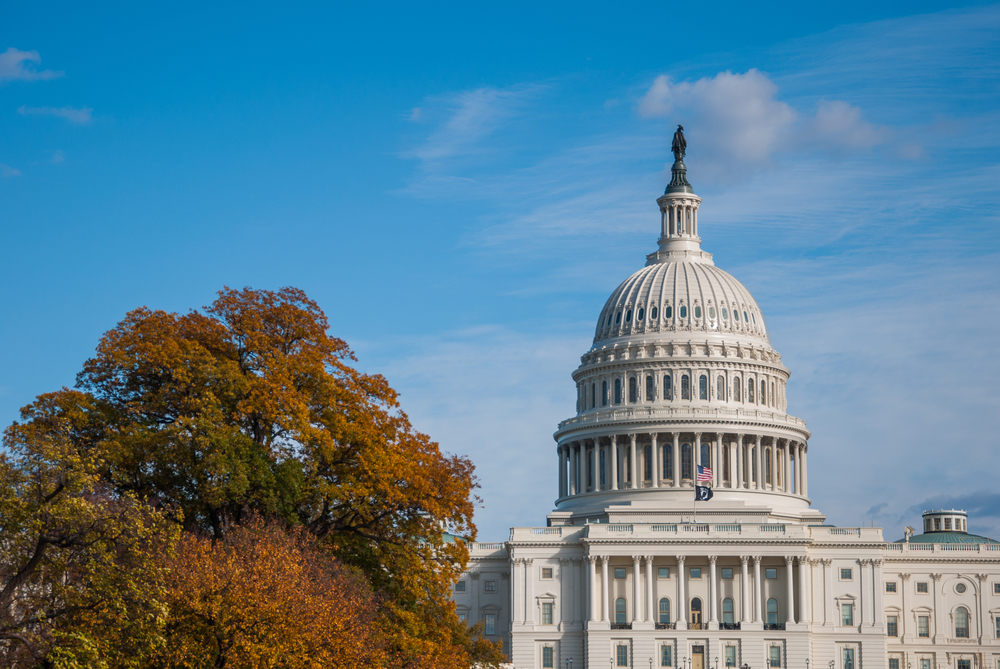
Image: Shutterstock
Guest post by FreightWaves’ John Gallagher
Even as the FAST Act looks increasingly like it will end up as a short-term extension rather than a multi-year reauthorization to fund roads and bridges, lawmakers on Capitol Hill are trying to find ways to inject safety and supply chain efficiency into the law through digital technology.
At a Senate Commerce subcommittee hearing on June 25 examining the adoption of technology in transportation, Brent Hutto, Chief Relationship Officer at digital load board Truckstop.com testified that connecting transportation freight systems together would be the best way to reduce highway congestion and improve delivery times.
“You have an unawareness of the marketplace and what’s going on in metropolitan areas because systems are not connected,” Hutto said. “Certain parts of the truck driving system in North America have access to the system and others don’t, or don’t use it because they’re not connected to what they use every day.”
Hutto informed the committee that Truckstop.com has been working on a project since 2017 with the Federal Motor Carrier Safety Administration and the state of Wisconsin on an “e-credentialing” product, where all the permits a trucker is required to display for roadside safety inspections have been condensed into a smart phone app.
“Our initial conclusion using a test fleet of 157 trucks found that we could reduce the stop time by 20 minutes” that an officer would be exposed to highway traffic while conducting an inspection, Hutto said. “That’s a massive increase in efficiency when it comes to their safety, as well as cost reduction for the fleets.”
Patrick Duffy, President of the Blockchain in Transport Alliance (BiTA) testified that such credentialing technology can be an effective use of blockchain technology. “Ensuring that the accuracy around driver credentials, whether that’s health records, insurance, or driving records – that’s high-fidelity data that hasn’t been corrupted through time,” Duffy said.
Duffy also explained that supply chain and transportation industry is a notoriously low-margin business, and building trust between counterparties through blockchain technology can go a long way toward capturing that margin. “By leveraging blockchain technology we can increase that trust and allow for collaborative commerce to emerge,” he said.
Duffy noted in his testimony that BiTA, whose members represent more than $1 trillion in revenue annually, released its first blockchain industry standard in February and has three more in the pipeline expected to be unveiled later this summer. When asked by Senator John Thune (R-South Dakota) how the standards will help companies integrate blockchain into supply chain management systems, Duffy responded that the industry is reaching a “critical mass” moment.
“Our members represent every transportation mode – air, road, rail, ocean – and are coming together in a collaborative way to agree upon these standards. I think that’s really going to move the ball forward from the experimental to the ecosystem-level adoption” over the next three to five years, he said.
Since the FAST Act was signed into law in 2015, automated and connected vehicle technologies have advanced while the percentage of electric vehicles in the market continues to increase. Shailen Bhatt, President and Chief Executive Officer of the Intelligent Transportation Society of America, pointed out the safety benefits incorporating the use of these technologies in the next version of the highway bill.
“There’s a broad swath of technologies that are available today, and I’m grateful that this hearing has been convened to inform the next authorization, because every day we delay another 100 people die on our roadways,” Bhatt said.
He added that the National Highway Traffic Safety Administration estimates that connected vehicle technologies can prevent 80 percent of crashes involving unimpaired drivers. “That’s 1.2 million crashes that can be mitigated every year.”
